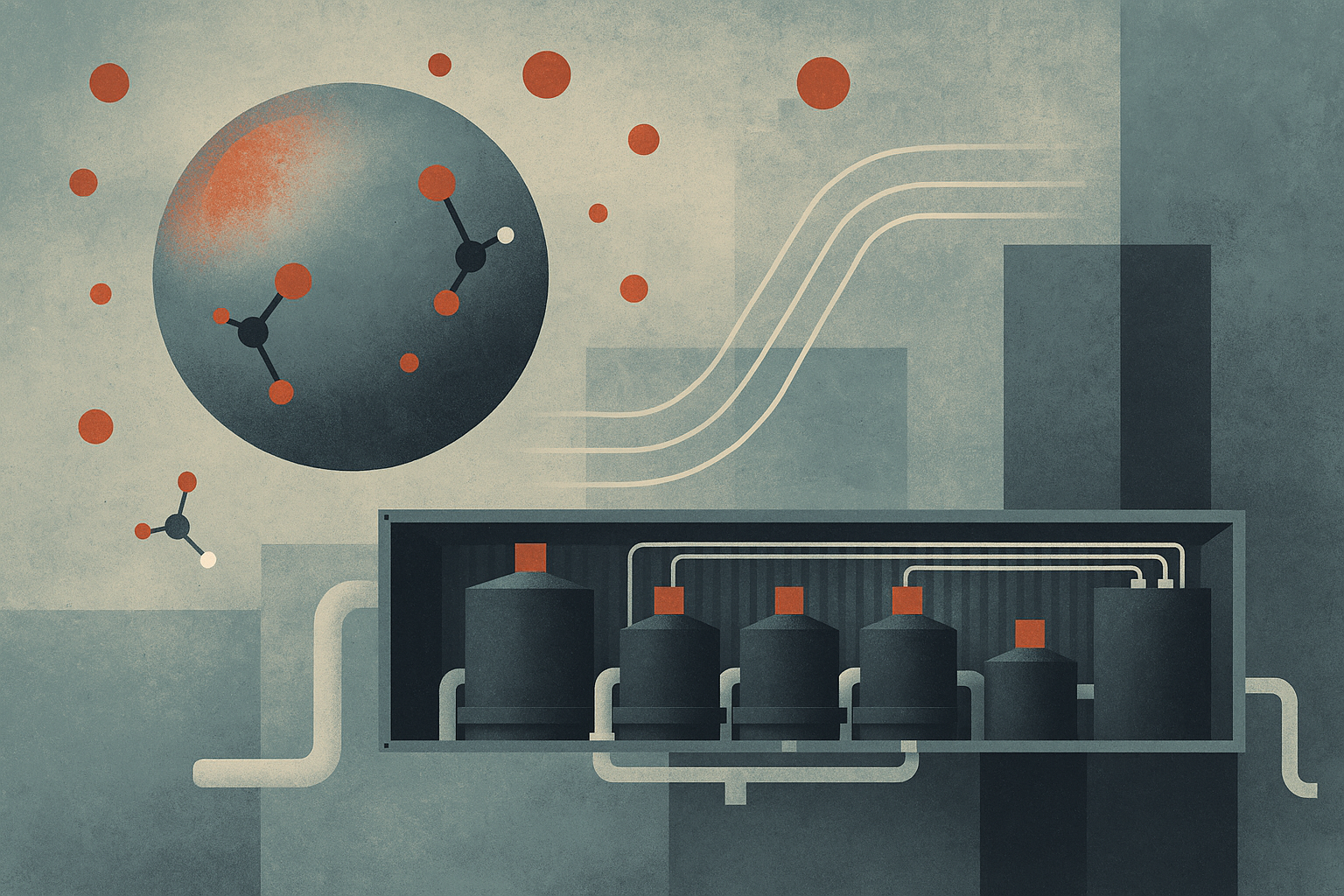Forever chemicals in your water: What can actually fix it?
You shouldn’t need a chemistry degree to know if your drinking water is safe.
But right now, over 70 million Americans are being exposed to harmful “forever chemicals”and most people have no idea what that means, or what to do about it.
This article breaks it down in plain English:
What PFAS are and where they come from
Why they’re harmful (even in tiny amounts)
Why the government’s response is moving slowly
What real solutions exist today and what action you can take now
AI-generated concept art
What are PFAS and why are they called forever chemicals?
PFAS (short for per- and polyfluoroalkyl substances) are a class of over 14,000 synthetic chemicals used in products like nonstick cookware, water-repellent clothing, food packaging, and especially firefighting foam [CDC].
They’re designed to be incredibly durable, so durable, in fact, they don’t break down naturally in the environment or the human body.
That’s why they’re nicknamed “forever chemicals.”
Once PFAS enter your bloodstream or your local water supply, they tend to stay there. These chemicals have been detected in the blood of most Americans [ATSDR].
And while some newer PFAS have shorter half-lives, their cumulative risk is still very real.
Tiny amounts, big health risks
Even at extremely low concentrations, measured in parts per trillion (ppt), PFAS are linked to serious health problems. According to the Agency for Toxic Substances and Disease Registry (ATSDR) and a 2022 report by the National Academies of Sciences, there's strong or suggestive evidence connecting PFAS exposure to:
Kidney and testicular cancer
Immune system suppression (including reduced vaccine effectiveness in children)
Increased cholesterol
Liver damage
High blood pressure during pregnancy
Lower birth weights
Thyroid disease
Developmental issues in infants and children
These aren’t vague or hypothetical risks. Many are now backed by years of research across civilian and military populations.
The EPA even estimates that reducing PFAS could prevent thousands of deaths and tens of thousands of serious illnesses over time [EPA, 2025].
So why hasn’t the government fixed this?
To its credit, the U.S. Environmental Protection Agency (EPA) finalized enforceable national drinking water limits for six PFAS compounds in 2024, including the most notorious ones, PFOA and PFOS, which are now capped at 4 ppt [EPA, 2025].
The problem?
Water systems have until 2031 to meet those standards. That’s six more years of exposure for many communities.
Worse, the EPA is also planning to rescind enforceable limits for three other PFAS (PFHxS, PFNA, and GenX), citing legal concerns about the Safe Drinking Water Act process [BBK Legal Alert, 2025].
Meanwhile, the government’s PFAS OUTreach initiative, meant to support water systems in reaching compliance, still relies heavily on voluntary funding and community initiative, especially in rural areas.
Help is coming, but not fast enough. And millions of people remain at risk.
What’s working right now?
While regulation drags, some companies aren’t waiting. One of the most promising innovations comes from Allonnia, a biotechnology company focused on environmental cleanup.
Their SAFF® system (Surface Active Foam Fractionation) is already being used in landfills, airports, industrial sites, and contaminated groundwater systems across three continents.
It removes more than 99.9% of PFAS, including short-chain variants, and operates without traditional media filters, meaning no secondary waste is created [Allonnia].
Key advantages of SAFF®:
Proven performance: Treats millions of gallons of water to drinking-safe standards
Sustainability: Zero consumables, minimal energy use, and modular mobile units
Cost-effective: Lowest operating cost among PFAS treatment systems
Scalable: Comes in weatherized containers (SAFF 20 and SAFF 40) with 24/7 remote monitoring
Destruction-ready: Creates a highly concentrated PFAS output that can be destroyed onsite
Allonnia also offers a Foam Fractionation Booster that pairs with SAFF to target stubborn short-chain PFAS without needing extra hardware.
This isn’t a prototype. It’s a deployable solution. And it’s ready now. Not in 2031.
What you can do right now
Here’s how individuals and communities can act. Even before federal deadlines catch up:
1. Check your water
Use resources like the USA TODAY PFAS contamination map or your local water utility’s public records to see if your area is affected. Many cities now post PFAS test results online.
2. Call your local reps
Ask how your city or utility plans to meet the EPA’s drinking water standards. Are they actively treating PFAS with current technology? Or waiting until the deadline? Push for adoption of technologies like SAFF® that are already proven and scalable.
3. Support innovation
If your community has access to funding (federal, state, or nonprofit), urge leaders to direct those resources toward solutions that work now. Allonnia’s approach has global precedent. It’s not experimental. It’s just underutilized.
4. Protect Yourself
If you’re in a high-risk area (like near a military base or landfill), consider using activated carbon or reverse osmosis filters certified to reduce PFAS.
While not foolproof, they can lower exposure until larger systems are in place.
This isn’t just a chemistry problem. It’s a systems problem.
PFAS contamination isn’t just about molecules, it’s about momentum. We already have the knowledge and tools to address it.
What’s missing is urgency and accountability.
As the VA, CDC, and ATSDR all emphasize, PFAS exposure has real consequences. The science is still evolving, but one thing is clear: delay leads to damage.
That’s why companies like Allonnia and the communities demanding action are so important.
They’re not waiting for permission. They’re building the fix.
Safe water shouldn’t be a privilege
Clean water isn’t a luxury. It’s a basic right.
And while regulations take years to catch up, everyday people and innovative science can push forward now.
Call your utility. Ask the hard questions. Share this info. Pressure your city council. Advocate for technologies like SAFF® that are already cleaning water across the world.
Because the faster we move, the faster “forever chemicals” become a thing of the past.
